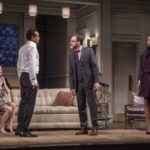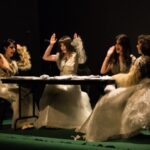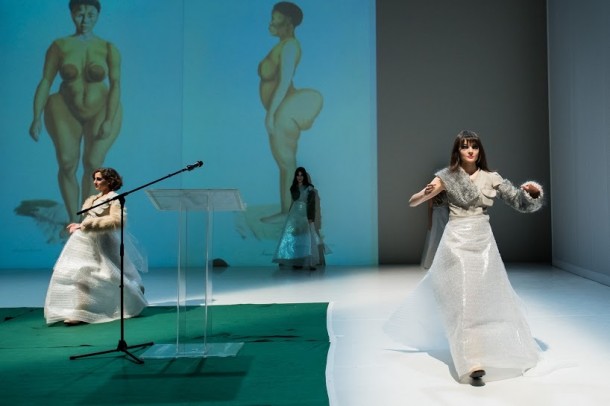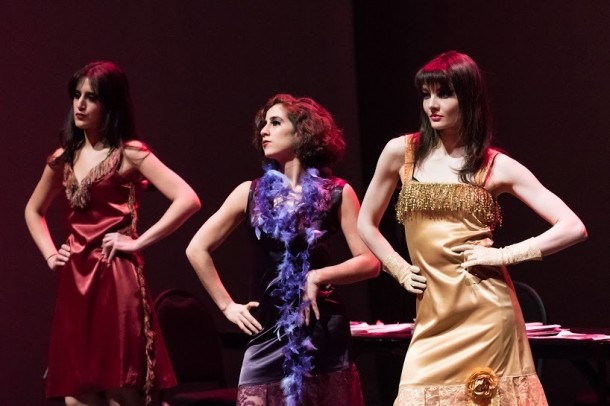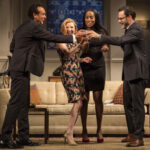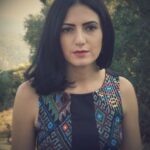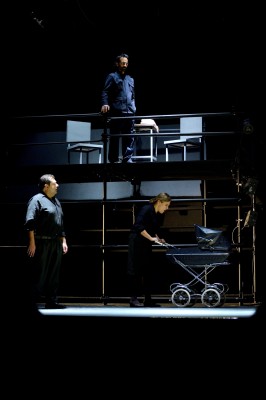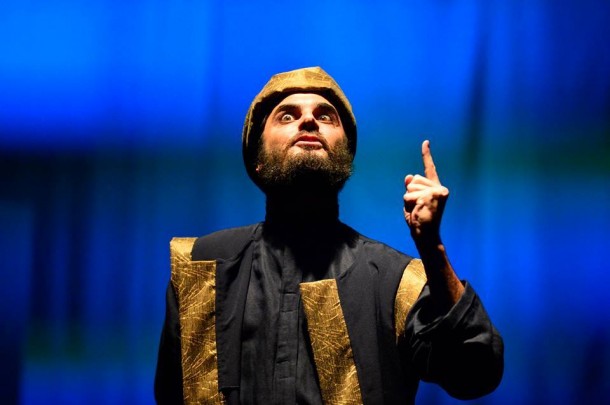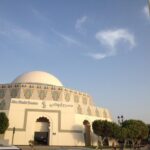
The Local Otherness: Theatre Houses in the United Arab Emirates By Ziad Adwan Arab Stages, Volume 2, Number 2 (Spring 2016) ©2016 by Martin E. Segal Theatre Center Publications
Abstract
This article examines the function of theatre houses in the United Arab Emirates. The article attempts to give answers to several theatrical controversies in UAE; such as why theatre, as an institution, has not developed in the same way other sectors has developed in the emirates? And what does theatre mean to the sheiks and the ruling classes? It is argued that theatre, as an activity and a building, is one of the rare venues that function to preserve the local identity.
Writings on theatre in UAE normally adopt historical and chorological approaches. The article adopts a geographical approach in order to relate theatre houses to the cities they are built in, and to relate theatre movements in the UAE to its bordering countries in the Arab Peninsula and to the ideologies in the Arabic speaking countries.
It is concluded that theatre in UAE is firmly associated with tradition, folklore and heritage. This association seeks to harmonise theatre with local culture and to correspond to Arabic ideologies that aim to authenticate theatre in the Arab culture.
Introduction[1]
In 2014, Al-Sharjah was named the Islamic Cultural Capital. Among the many edifices Al-Sharjah built for the event, Al-Majaz Island Project was constructed; a 7238 square meter open-air Roman-style amphitheatre that seats up to 4500, with several terraced seating areas. The project cost 120 million Emirati Dirham (32.7 million US Dollars). The complex was built in Khaled’s Lake, forming a small island inside the lake; with one bridge that connectes the city to the island. Up to now, the interior and the exterior have been completed but the surrounding of the amphitheatre is still under construction, with plans to build shops and parks.
The official launch took place on 26 March 2014 in the presence of Sheikh Sultan Al Qasimi; the ruler of the Sharjah emirate, a member of the Supreme Council of the United Arab Emirates, Chairman of the Executive Committee for the Sharjah Capital of Islamic Culture 2014 – and a playwright. The opening production was Cluster of Light, a play that narrates the emergence of Islam. The production utilized more than 300 actors and more than 700 dancers and musicians from across the globe. The website of Sharjah Islamic Culture Capital and press coverage call Clusters of Light a theatrical artwork. Clusters of Light was based on poems written by Abdul Rahman Ashmawi, and was performed by major Arab singers. The event did not include actors, in the sense of role playing; therefore the terminology Oratorio was used in other
A few days after the opening, the administration of the Al-Majaz Island Project found out that the amphitheatre was missing green rooms. The mistake was quickly repaired and, in less than six months, the amphitheatre was on restructured with green rooms. Leaving the amphitheatre without green rooms is not the only controversy raised by the Al-Majaz Island Project. Instead of building an edifice with Islamic features to celebrate Al-Sharjah as the Islamic culture capital, a Roman style amphitheatre was chosen. This was particularly troubling in view of the fact that most of the theatre houses in the UAE contain Islamic and Arabic features, but here, when a particularly Islamic event was presented, a Roman-style amphitheatre was created for it. Even more problematic was the selection of theatre to open an Islamic culture year in a ountry that did not witness any theatre activity before the second half of the twentieth century, and where theatre remains a distinctly minor and in the eyes of many, suspect form.
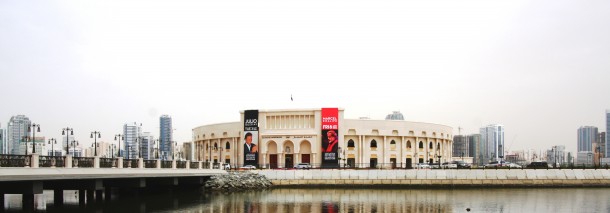
The presence of Sultan Al-Qasimi might be one of the answers to the above questions. The ruler of Al-Sharjah is a playwright and his name is associated with theatre in Al-Sharjah. Most of the theatre activities, festivals and theatre policies take place under his patronage. His enthusiasm encourages the theatrical scene in Al-Sharjah to the extent that it has become the self-proclaimed cultural centre of the UAE and, perhaps, the most recognised theatre city, not only in the emirates, but also in the whole Arabian Peninsula.[2]
Saying that Al-Qasimi ‘loves’ theatre does not mean that the other Emirati sheiks ‘hate’ theatre. Several theatres have been built in Abu Dhabi and Dubai andin the rest of the Emirates. Up til now, theatre activities seem reluctant to “conquer the world” in the the words of Alamira Reem Bani Hashim, Clara Irazábal and Greta Byrum in their article The Scheherazade Syndrome (2010).[3] Several activities have developed in the Emirates; news agencies, banks, cinema festivals and other services and artistic activities have fan important position, but theatre has not flourished therened locally and internationally in the same way.
In this paper, I shall discuss the presence of theatre in the UAE and argue that in cities that celebrate world record tallest buildings, biggest edifices and most expensive constructions, theatre buildings serve as institutions that preserve local identity. The outcome of city planning in the Emirates is a mosaic of different fabrics, where buildings and districts do not reflect the local identity. Among this chaos of architectural designs, the only institutions that reflect the local identity are mosques, some governmental buildings and theatres. The attempt of this paper is to explore questions such as; why do sheikhs, the only decision makers in the UAE, decide to build theatre at the first place? What does theatre mean to the ruling class? Is it to prove modernity or to protect identity? Why has not theatre progressed like all other sectors in the UAE?
Scholars and historians disagree on the date of the first play to be staged in the UAE. Some state that the first play was (طول عمرك وأشبع طماشة Tool Omrak wa Ashbe’e Tamasha), which was presented at the Omani Club in Al-Sharjah in 1958. Abdul Ilah Abdul Qader claims that theatre was introduced in the UAE when the Iraqi theatre maker Watheq Al-Samira’i presented For my Son (من أجل ولدي Men Ajel Waladi) in 1963. Barbara Michalak-Pikulska states in Theatre in the United Arab Emirates that ‘the play by the Egyptian Maḥmūd Ġunaym Al-Murū’a al-muqni‘a (“Sufficient Chivalry”) staged in 1955 is considered the beginning of the theatre movement in the UAE. The first text to be written by an Emirate writer, by Sulṭān Ibn Muḥammad al-Qāsimī is the play entitled Nihāyat Ṣahyūn (“The End of Zion”, 1958)’.[4]
Several writings on theatre in the UAE adopt chronological introductions of the emergence of theatre in late 1950s and its development up to date. Not having obtained definitve answers to the above questions, I will consider instead the geographical factors that have influenced theatre in the UAE. These influences are significant on two levels; the first deals with the location of purpose-built theatre houses in the new born cities. The second deals with the location of the UAE in the Arab Peninsula, and the ideologies that influence not only theatre in the emirates but also the meaning of theatre to the sheikhs who are the main decision makers in the state.
The Misplaced Position of Theatre in the UAE
In the second half of the twentieth century, oil was discovered in the Arabian Peninsula and the UAE oil reserves became recognized as the seventh largest in the world. 1971 witnessed the unification of the emirates and Sheikh Zayed became the first president of the state. Education, infrastructure and modernity were the main goals Sheikh Zayed aimed for, to establish a country that would become a worldwide destination. Shortly afterwards, Dubai became an international trade and commerce center and the UAE became one of the most rapidly urbanising regions in the world. In contrast, theatre has not developed with the same swiftness and theatre institutions are the least attractive among cultural and artistic activities. Although many theatres were built and many festivals have been organised, theatre activities go largely unnoticed by many locals, international tourists, theatre-goers and academic researchers.
International scholars, even those with an interest in Arab theatre, do not seem to notice the existence of theatre in the UAE and the Gulf in general. Arabic literature, journalism and academic writings tend to degrade theatre and cultural movements in the Gulf, considering the Gulf States spoiled countries with shallow cultural significance. Local writings, published in the Emirates, on the other hand, normally praise the theatre movement in the UAE and celebrate Al-Sharjah for becoming a theatrical center in the Arab Peninsula.
One step to encourage theatre popularity in the UAE has been running theatre festivals. The number of theatre festivals in the Emirates, which almost cover all seasons of the year, would leave even an avid theatre goer flabbergasted. Yet, in comparison to other art festivals in the UAE, such as Dubai film festivals, art biennales in Sharjah and Dubai, and music concerts, theatre festivals are still unnoticeable on the international theatre map. They are also considered the least important in comparison to other theatre festivals in the Arabic-speaking countries. In Theatre Festivals in the Arab World (2007) Marvin Carlson lists the major theatre festivals in the Arab region, and in the end of his study he mentions the Gulf only in the passing. Carlson divides the Arab speaking countries into three theatrical regions; the Middle East and Egypt which he considers the theatrical center of the Arab world, North Africa which is still under the French influence, and the Gulf states which are ‘strongly committed to traditional religion both in their culture and their governments and generally deeply suspicious of external, especially Western influence, which of course includes European-style theatre’.[5] Although he prioritises Al-Sharjah as being the prominent city of theatre in the Gulf, Carlson ranks the Gulf festivals as the least important in the Arab theatre world.
The Iraqi writer Abdul Ilah Abdul Qader, who works as a theatre director and has been serving as a cultural administrator in several cultural institutions in the UAE, has written several books on Emirati theatre. Thse large and luxurious and books seek to elevate respect for theatre experience in the Emirates. The History of Theatre Movement in the United Arab Emirates 1960- 1986 (2007) covers more than 300 pages and The National Theatre in Al-Sharjah in Two Decades 1975-1995 covers 240 pages. Giving the same information and repeating the same complements, the two books adopt a chronological narration of the emergence of theatre in the UAE in late 1950s and give a wide-ranging archive of Emirati playwrights, directors, actors, companies and festivals.
The brief international mentions and the luxurious local books do not give answers to important controversial topics in the Emirati theatre scene; has theatre contributed in the modernisation processes aimed by Sheikh Zayed and the ruling families? Why does he run of any play not exceed three days? Why is theatre free, when all other activities in the Emirates are costly? Why has theatre not developed like all spectacular activities in the UAE? Why does theatre not join the fancy Guinness Record edifices in the UAE? Why, among all the non-native edifices, have theatre buildings, in particular, emphasised local characteristics in their architecture, plans and activities?
Using chronological and historical methodologies might portray a picture of the emergence of theatre and the development of theatre institutions in UAE. But seeking to analyse the complicated controversies around Emirati theatre requires geographical approaches, in terms of examining the chosen physical location of theatres in the Emirati cityscapes, and the location of the UAE in the Arabic Peninsula and the “Arab World.” This examination would help one to understand the position of theatre in the UAE and its cultural role in the new cities, specifically in the major cities of Abu Dhabi, Dubai and Al-Sharjah. In the following, I will provide a description of theatre houses in the UAE and argue that theatre has not functioned in the modernisation process, but, on the contrary, it has contributed to preserving local identity, to the extent that some theatre venues contribute to “a throwback to an ‘Orient’ that is no longer possible elsewhere.”[6] Yet, the Orientalist representation of the self is not intended to attract international theatre goers, but rather it seeks to harmonise with theatre movements and ideologies conceived in the Arabic-speaking countries.
The Emiratis, being a minority in their own country, are challenged by a dilemma: how to control public spaces, in terms of balancing between the modernisation process and the local identity? In a hot country such as the UAE, outdoor activities are limited to a few options. Shopping malls are the main gathering places but are controlled by structures of commoditization and consumption. Cinemas are mainly located in malls and firmly bounded to blockbuster distribution and commercialism. Sports have a long tradition of being the main socialising spaces before the discovery of oil. Notably, plays between late 1950s and early 1970s were presented in football clubs.
Several Emiratis combine traditional clothing with western education and openness to other languages, specifically the English language. This equilibrium becomes unbalanced in the context of theatre, where the oriental representation of the self becomes the norm. Branches of universities, such as the Sorbonne and NYU, branches of museums such as the Louvre, branches of movie theatres, including 3d, 4d and 6d, and a branch of New York Film Academy have all opened and successfully functioned in the UAE. To a certain extent, every institution in the UAE has its twin in Europe and North America, but theatre institutions did not adopt an international twin model. Organizers of cinema festivals and art biennales are bilingual and their publications are in Arabic and English, targeting international artists. In contrast, English is barely heard at the Emirati theatre institutions, and the media library at the Al-Sharjah National Theatre, for instance, does not have any filmed international play or a play printed in another language other than Arabic.
The topic of identity in the “Arab world” in relation to theatre is the main issue raised by Don Rubin in The World Encyclopedia of Contemporary Theatre: The Arab world. Rubin opens his coverage of theatre in the Arab world with the question of the relationship between Arabs and Islam. He refers to a friendly discussion with Richard Schechner on whether there is something called the “Arab world; and whether it is justified to edit a theatre volume for the ‘Arab world’.” The conclusion, according to Rubin, is that “the Arab World” is an entity that deserves a volume, and these countries present similar approaches towards national identity, Islam and theatre.
According to Don Rubin in his coverage of theatre in the UAE, “only some 20 per cent of the country’s population are currently from the UAE, with less than half the total population actually of Arabic descent […] the population has remained overwhelmingly Muslim (96 per cent).” Arabic is the formal language, but it is not the mostly used one. English is the most spoken in business and working places and Urdu is the most heard on the streets. This mosaic of languages could be associated with the missing identity of the city planning and the cityscapes, but it generates another dilemma for theatre; i.e. in which language should a play be presented? Hence, the question of the role of theatre as a public space that preserves local identity becomes problematic, since a play misses a high percentage of its potential audience when it is performed in any language. Although most of the theatres are huge with big stages and auditoriums, the building signs and the surroundings of theatre houses construct a traditional and conservative image of theatre. Theatre, in this context, becomes a closed space for certain groups, who are mainly Arabic speakers.
Abu Dhabi, the capital, has two theatres; the Abu Dhabi National Theatre, and the Abu Dhabi Theatre. The Abu Dhabi National Theatre, which was established in 1981, is a proscenium theatre that seats 2246. It also contains a lecture and a conference hall (for the VIPs) that seats 150 and, a multi-purpose hall and two exhibition halls that host painting and sculpture exhibitions. It also contains Islamic arches and other “oriental” ornaments. The venue rarely presents plays, and when a play is shown it does not last for more than a couple of days. The Abu Dhabi National Theatre is located in the centre of Abu Dhabi, and is surrounded by a complex of media institutions such as SKY News and the New York Film Academy.
The Abu Dhabi Theatre, which was opened in 2007, is a highly equipped proscenium theatre that seats 530. Visiting the theatre during the working hours, one will find only a receptionist and the director of the theatre. The theatre rarely presents plays, and most of the activities are run by embassies in Abu Dhabi, showing traditional and classical music concerts and some lectures. The white theatre looks like a mosque in terms of using a dome for roofing. It also features “oriental” ornaments. It is located in thre Emirates Heritage Club, which is a big complex that exhibits small and traditional aspects of the Emirates, i.e. houses made of mud, huts and old sidewalks.
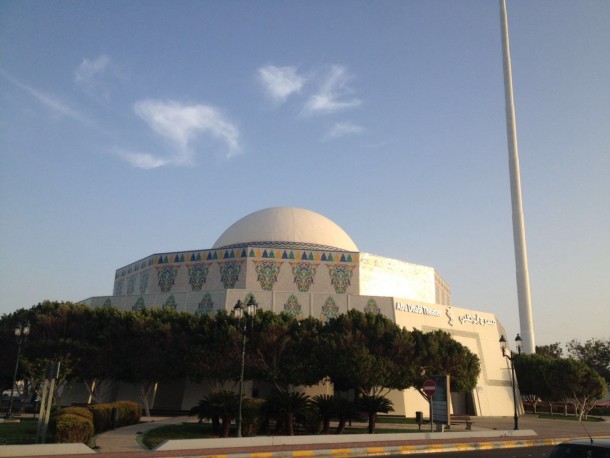
Although there are more theatre houses in Dubai, actual theatre activities remain scarce. The Scientific Association and Community Theatre (ندوة الثقافة والعلوم) was initiated in 1987, when several intellectuals met with Sheikh Mohammed bin Rashid Al Maktoum to propose the idea and to get his “permission.” The idea was approved and a decree was issued in the same year to found the institution. The administration requested that the architects should ensure that the building(s) would preserve the local heritage. The theatre is located in Al-Mamzar district at the edge of the city of Dubai. The exterior of the building has the shape of a palace with Arabic and Islamic details that resemble the architectural style of Andalusia.[7] According to its website, the design of this cultural complex combines “desert architecture” with the latest geometric theories to conclude “a livable architectural trinity that fuses Islamic civilisation, desert civilisation and the latest of the scientific revolution.”[8] The complex also features arabesque and Arabic engravings of verses from the Quran, Al-Hadith and classical Arabic poetry.
The complex contains a theatre, called Al-Nadwa. The theatre occupies the biggest space in the complex and it seats 1000. It hosts plays, music concerts, folklore shows, conferences and school and university graduation ceremonies. Next to the theatre are a multi-purpose hall and a VIP hall to receive sheikhs and members of high society with a special entrance for them. The venue hosts the Dubai Festival for Youth Theatre; the only theatre festival in Dubai.
The Dubai Folklore Society is located in Al-Mamzar too, but it is a small venue in comparison to other theatre buildings. The building has two signboards; the text of the first signboard reads: (مسرح جمعية دبي للفنون; literally, Dubai Association for Arts Theatre). The second signboard reads: (جمعية دبي للفنون الشعبية; literally, Dubai Folklore Society). The word theatre appears on one of the signboards but it reflects the tendency to associate theatre with tradition and folklore.
The Madinat Theatre is a venue situated in the luxurious five-star Madinat Jumeirah Resort, which is the largest resort in the Emirates. It spreads across over 100 acres. The floors are made of marble and the interior contains grand columns. According to its website, Madinat Jumeirah was “designed to resemble a traditional Arabian town.”[9] The theatre hosts entertainments including musicals, stand-up comedies, ballets and film screenings.
The Dubai Community Theatre and Arts Center is located inside the Mall of the Emirates. The center consists of a proscenium stage that seats 543, three rehearsal rooms for dance and ballet shows and the Kilachand Studio Theatre, which is an intimate theatre that seats 151. It has flexible seats and is used for small shows, seminars and experimental theatre and community productions. The Dubai Community Theatre and Arts Centre is the only theatre in the Emirates to present plays in English and Urdu.
Al-Fujairah organises the Al-Fujairah International Monodrama Festival; the only theatre festival in the UAE that is not limited to Arabic language. The festival does not take place at Al-Fujairah National Theatre, which was built in 1979 and seats 1500, but takes place at a smaller theatre, i.e. the Dibba Al Fujairah Theatre. The Dibba Al Fujairah Theatre has two proscenium theatres, the first seats 350 and the second seats 150. The white big theatre, founded in 1991, has two building signs written in Arabic and English; The upper one reads (جمعية دبا للثقافة والفنون والمسرح; literally, Dibba Society for Cultures, Arts and Theatre), the lower one reads (مسرح دبا الفجيرة ; literally Dibba Theatre in English). Unlike the other theatres in the Emirates, the exterior of this theatre, does not reflect Islamic or Arabic details but adopts a geometrical style with a glass facade.
The challenge of identity is less critical in Ras Al-Khaimah, Um Al-Quwain and Ajman, as these emirates have not become international centers like Dubai and Abu Dhabi. The Emirates of Ras Al-Khaimah, Um Al-Quwain, and Ajman have fewer and smaller theatres. A national theatre is located, though, in each of these Emirates. The three national theatres are simple in their designs and activities but they still have VIP halls. They feature pictures of the Emirati sheiks, an element that is less apparent in the other theatres in Abu Dhabi, Dubai and Al-Sharjah. These stages are poorly equipped and the theatres are all small ones. The facades are poor in their decorations and they feature less Islamic and Arabic details. At preent, the surroundings of these theatres are still under construction, with dust and sand covering both bypassers and the parking spaces.
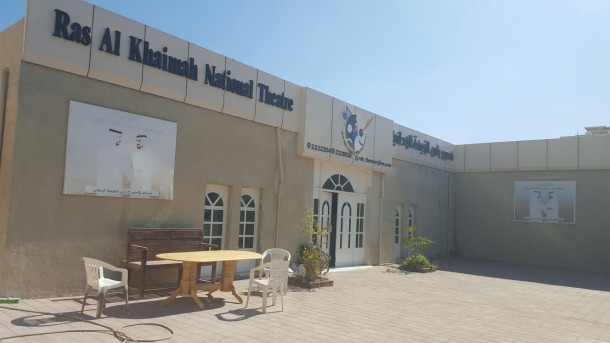
To a certain degree, and apart from Al-Sharjah, the theatre scene in the above described venues is barely sensed. Theatres are normally empty, since the maximum run of a play is three nights. The Mamzar Theatre in Dubai is normally closed, but some theatre-makers gather for an hour in the theatre from time to time for socialising. Theatre houses tend to demonstrate local identity in their activities as well as in their design. Theatre institutions embrace Arabic language in activities as well as in administration offices. Most of the theatres do not have box offices and theatre activities are free.[10] Although they adopt the European proscenium stage design, theatre houses, in general, emphasise one model of exterior design; they feature Arabic mosaics and ornaments and some of them use domes for roofing. Most of them are located in heritage villages and traditional districts. Some building signs associate theatre with folklore and heritage indicating that theatre and tradition are one.
In The Semiotics of the Islamic Mosque, Roger Joseph argues that mosques in non-Arab Muslim countries, such as Turkey and Iran, tend to be massive and extravagant. It is a compensational attitude toward a religion that these countries believe in, even they do not share the language of the Qur’an. Joseph states that “the Qur’an has its centricity in Islam because it is literally the word of God; the mosque can never have this status since it is not created by God but rather by men. There can be no Persian or Turkish or Indonesian Qur’an, yet mosques created in these cultures all reflect parochial dispositions.’[11] Arguably, theatre buildings in the Emirates experience the same contradiction. The tendency to build massive edifices, with big auditoriums, shows a similar attitude to an art that is alien to the culture. The attempt is to compensate for the absence of a theatre tradition in the country by constructing a dazzling local image of the theatre house.
In Orientalism (1978) Edward Said argues that the Occident constructed several representations of the Orient that assisted in the process of “Othering” “the East” from “the West.” According to Said, the Occidental identity sets itself in contrast with the Orient. Following the same pattern, theatres in the UAE have constructed a representation that sets itself in contrast with the modern life in the Emirati. In contrast with eccentric modern buildings and skyscrapers, theatre houses are humble, and the architectural designs feature Islamic and Arabic decorations. In contrast with expensive activities, theatre events and festivals are generally made free. In contrast with the mixed languages found elsewhere, Arabic is the only spoken language used inside the theatres. Generally all theatres are located within newly-built folklore and heritage districts. Theatre, thus, is firmly associated with stereotypical characteristics to represent an image that any Orientalist “with unshakable abstract maxims about the ‘civilisation’ he had studied” will be pleased to see.[12]
The exotic self and the Orientalist representation of theatres in the UAE are not aimed to attract international tourists, world records and Western acknowledgment. In the following section, I will discuss the theatres in Al-Sharjah and link their practices to Arabic ideologies that aim to find Arabic elements in theatre, attempting to harmonise theatre with the local culture in the Arabic-speaking countries. The Arabisation of theatre houses in the UAE corresponds to a persistent Arabic discourse one might call the “Authentication of Theatre.”
Arabising Theatres in Al-Sharjah
Apart from the Al-Majaz Island Project, which is located inside a lake,[13] all the theatres in Al-Sharjah cling to Islamic and Arabic designs, adopting the other emirates’ approach to theatre. Al-Sharjah, which is known as the cultural centre in the UAE, is the most conservative and the strictest among the other Emirates. Westerners who reside in the UAE avoid living in Al-Sharjah to eschew conservative regulations, regarding an intolerance of bars, intimate couples, loose clothing, alcohol and shisha and so on. Thus, the question of identity is less problematic in Al-Sharjah, as most of the Al-Sharjah dwellers are Arabs and Muslims, and conservatism is unquestioned.
Correspondingly, taboos on social and political lives are applied to theatre, to the extent that men and women are not allowed to touch on stage, and not even shake hands. Certainly, other topics are untouchable such as the sheiks, immigrants, expats and Islam. These subjects are more tolerated in other media, such as cinema, fine arts, pop music, TV shows and soap operas. Among the artistic forms, which are all imported to the region in the past few decades, more severe restrictions are extended to theatre alone.
The National Theatre Company, which began in 1975 and was inaugurated in 1978, is located in the heart of Al-Sharjah district, or what is called The Heritage District. The district combines several cultural institutes such as, the theatre society, Al-Sharjah institute of theatre arts, the poetry house, Al-Sharjah institute of arts, Al Sharjah museum and some traditional sites with rural and Bedouin elements. The district hosts most of the theatre festivals in Al-Sharjah, as well as Al-Sharjah Biennale and March Meeting. The National Theatre building contains the offices of the company and does not have a purpose-built theatre. The company shows their productions on various stages in Al-Sharjah and the rest of the Emirates. Close to the national theatre company is the Theatrical Association, which is meeting place for Emirati theatre makers.
Al-Sharjah Institute of Theatre Arts is also located in the heart of Al-Sharjah district. The institute is still not allowed to function as an academy, but it runs workshops and hosts plays and theatre festivals. The big white building features traditional and local architectural elements and has two proscenium theatres; the first seats 286 and the second seats 209.
Al-Qasba District has become one of the most attractive districts in Al-Sharjah since it was opened in 2005. In addition to Al-Qasba Theatre, Al Qasba District includes Maraya Art Centre, halls to host entrepreneurial business activities and conferences, shops, walking paths, cafes and boats that sail within the complex. Al-Qasba Theatre is a proscenium theatre that seats 250 and is well-equipped but does not have dressing rooms. It won the LEAF Award in 2012 in the refurbishment category.
The most celebrated theatre venue in Al-Sharjah is the Culture Palace, which is a large and well-equipped theatre that seats 670. It has also a lecture hall that seats 134 and two VIP halls. The white theatre has a dome above and features Arabic and Islamic details. It was officially opened in March 1987 in the presence of Sultan Al-Qasimi, the ruler of Al-Sharjah, and it has hosted several theatre festivals. In 1998, before Al-Qasimi’s play (عودة هولاكو; literally, Hulagu’s Return) was presented, the stage and the theatre were renovated. The stage was expanded, and the theatre was provided with more decorations that inspired by Arabic and Islamic architecture and was rechristened The Culture Palace on 27 March 2000.[14] In addition to plays and theatre festivals, the venue hosts conferences and other cultural activities.
The Culture Palace is located at Dawar Al-Kitab (The Book Square). In the Arabic language, the word ‘The Book’ refers mainly to the holy Qur’an. The pillar in the middle of Dawar Al-Kitab is a big monument of an open Qur’an. It is about seven meters long and each opened page is 4.2×2.4 meters. Around the square stand other cultural and significant buildings; Al-Sharjah Library, The Department of Culture and Information, and the office of the ruler of Al Sharjah Sheikh Sultan Al-Qasimi.
Many articles on Emirati theatres have claimed that the Ministry of Culture is in charge of building theatres and facilitating theatre activities, groups and festivals. Marvin Carlson, for example, notes that ‘the ministries of Education and of Youth […] had theatre divisions within them, and these three ministries have continued to be the main support for theatre activities in the Emirates’.[15] Also, Barbara Michalak-Pikulska indicates in Theatre in the United Arab Emirates that ‘the ministry of culture lavished financial support on the numerous theatre groups that were coming into being’.[16]
Through interviews I conducted in UAE, I was informed that theatre institutions are in fact not related to the Ministry of Culture. Each theatre gets its subsidy and policy from the government of the emirate it is founded in.[17] When theatre in Al-Sharjah is mentioned, it is generally associated with the ruler of Al-Sharjah, Sultan Al-Qasimi and the ruling family. Sheikha Bodour daughter of Sultan bin Al Qasimi is the Chairperson of the Sharjah Investment and Development Authority (Shurooq) the company that initiated Al-Qasba District and Al-Qasba Theatre. Sheikh Sultan Bin Ahmed Al Qasimi, not to be confused with the ruler of Al-Sharjah Sheikh Sultan bin Muhammad Al-Qasimi, is the chairman of Sharjah Media Centre, the company that founded Al-Majaz Island Project.
Historically, cultural venues have always been the respnsibility of wealthy families, rather than the responsibility of the government or the community in the Emirates. Before oil was discovered in the region, wealthy families took the responsibility of planning, establishing and covering the expenses of cultural and educational venues. This commitment was not only a duty, but it was also considered an honor (Kamel Yosuf Hussain, 2010: 26).
Theatre houses followed the same treatment and became the responsibility of the ruling classes. Most of the theatres in the UAE have VIP halls to host sheikhs and top officials. On many occasions, small elegant tables are positioned in the auditoriums in front of the first row, that is always reserved for the sheiks and the VIPs.
Sultan Al-Qasimi is normally mentioned as the ruler and the playwright who “loves theatre” and whose personal passion for theatre has assisted in encouraging this art in Al-Sharjah. Al-Qasimi’s personal admiration of the art of the theatre appeared when he was a student at school. Al-Qasimi wrote and acted in The End of Zion in 1958 at The People’s Club for Sport and Culture.[18] The play provoked the British mandate, as it criticised Zionism in occupied Palestine and called for Arab unification to resist British colonization. The play and the venue were closed. The impact of this experience emphasised the role of theatre as a political forum that can promote political and national discourses.
Al-Qasimi’s engagement in theatre did not cease. He wrote plays and articles on theatre and ordered the establishment of many theatre institutions in Al-Sharja. Al-Qasimi was chosen to give the World Theatre Day speech on 27 March 2007. In his speech he refers to this anecdote, “I remember it was a political play that angered the authorities at the time. Everything was confiscated, and the theatre was closed before my very eyes. But the spirit of the theatre could not be crushed by the heavy boots of the armed soldiers […] I became absolutely convinced of what the theatre can do in the lives of nations, particularly in the face of those who cannot tolerate opposition or differences of opinion.”[19]
This standpoint in is close accord with several Arabic theatre manifestos and ideologies that coined the two terms “Authenticating Theatre” and “The Theatre of Politizisation.” Yusuf Idris’s Towards an Egyptian Theatre (1974), Abdel Al-Karim Burshid’s The Foundation and the Modernisation of the Modern Currents in the Arab Theatre (2014) and Sa’dallah Wanous’s Manifestos for a New Arab Theatre (1970) have influenced theatre in many Arabic-speaking countries, and consequently influenced the Emirati theatre.
The main, and perhaps the only theatrical source of influence on the Emirati theatre, has come from other Arabic-speaking countries. Not having a theatre education, most of the Emeriti theatre-makers received their training in Kuwait and Egypt. In addition, many Arab theatre makers have visited the UAE and given workshops, performed plays and inspired the initiation of theatre institutions there. The UAE and Al-Sharjah specifically have become an Arabic theatre centre and a platform where many Arab theatre makers meet and interact. In addition, the publications and the translations of international plays and academic books have enriched the Arabic theatre library, continuing the project that Kuwait used to carry out in the 1970s, -80s, and -90s. Theatre in the UAE, therefore, has not orientalized itself to attract the view of an “Other,” but rather has sought to harmonize with theatre movements and politics in the Arabic speaking countries. The harmonizing processes to authenticate theatre has been extended to the exterior design of theatre houses and the theatre activities within them.[20]
Sa’dallah Wanous argues in (بيانات لمسرح عربي جديد; literally, Manifestos for a New Arab Theatre) that theatre in the Arabic-speaking countries should achieve what he called (politicization التسييس). He divides this process into two parts; the first is ideological, that concerns the interrelations between the values of the presented plays and the values of the changing societies. The second is the artistic level, which seeks to find the forms by which theatre can communicate with the new and targeted audience(s). Wanous states that he considers the manifestos as “assumptions in search of authentic theatre, which comprehends its role in its environment, and attempts to understand this role.”.[21] However, Wanous’s criticism of associating theatre with folklore does not seem to have been heeded in the Emirati cities with their mixed nationalities. Theatre in the Emirates emphasises the association with tradition, while simultaneously linking the Emirati theatre experience to Arabic theatre currents, theories and practices.
Proposing a geographical understanding of theatre in the UAE, I should refer to the point that the Arab peninsula is also an important influence. This geographical factor lessens the potential for the Emirati theatre to expand internationally. UAE borders with Qatar, Oman and Saudi Arabia. These countries are also to some extent “generally deeply suspicious of external, especially Western influence, which of course includes European-style theatre” as Marvin Carlson states.[22] Therefore, Emirati theatre festivals, for instance, cannot invite international companies, as the UAE will not be on the tour map of the international companies.
The harmony between Emirati theatres and Arab theatre makers does not leave the Arabization of Emirati theatre unquestioned. In a country where everything is new and where most of the institutions collaborate with international partners, theatre has chosen to associate itself with the Arabic culture. In The Scheherazade Syndrome (2010) Alamira Reem Bani Hashim, Clara Irazábal and Greta Byrum remark on the architecture in the emirates and its self- representation to the international world:
Throughout the last decade, Dubai has been shaping itself into the image of a ‘‘global city’’ via iconic architecture—seemingly on the theory that, if it looks like a global city, it will become one. This quest led to near complete economic collapse in late 2009, as the emirate’s debt challenged its leadership’s ability to sell the image of material extravagance and architectural ambition to a world suddenly wary of real estate speculation.[23]
This note is quite applicable to theatre but conversely. While all the institutions in the UAE are linked to international partners, theatre is linked to the Arabic culture; the culture that has always wondered about the uncertain position of theatre in its environment. Wanous states in his manifestos that the Arab culture has always debated theatre, always seen it in crisis and has always struggled to locate theatre in its environment since it appeared in the Arabic speaking countries in the middle of the nineteenth century.[24]
Consequently, the Emeriti theatre finds itself, to some extent, in the same dilemma of abstract definitions of theatre and its relation to the local environment and identity. This has led to a limited theatre experience in a country where its rulers can afford to do what they want, but kept many theatrical projects incomplete, as in the case of the Al-Majaz Island Project. It has served as a venue to host famous pop stars and popular musicians like Yanni and Julio Iglesias, and yet the theatre venues are left empty, and the theatre institute there is still not functioning as an academy.
Conclusion
Except for mosques and some governmental institutions, theatre houses are the only buildings that reflect the local Arabic and Islamic identity in the UAE. In addition, theatre activities oppose the dominant commercial life style in the Emirati cities. Most theatres are made free and most of the plays are in Arabic.
Theatres in the UAE signify a complex model of representation. They are proscenium stages inside oriental-decorated buildings, located in heritage districts, in cities that have become cosmopolitan centres, in a region that is strictly conservative. To some extent, theatre activities as well as theatre buildings remain foreign to the ongoing life style in the UAE.
The contradictory nature of the theatre scene in Al-Sharjah, being the strictest city and the cultural centre at once, can best be resolved by the discourse of theatre and identity and the literature that attempts to authenticate theatre in the Arabic culture.
The UAE is one of the most rapidly changing countries in the world, culturally, demographically and economically. The argument of linking Emirati theatre to the local identity might lose validity in the coming years or decades. Dubai is currently constructing an opera house that is due to open in 2016. The Opera House, which will seat 2000, dispenses with the traditional design and adopts a modern architectural model. Cultural and social changes might enable theatre institutions to escape from the heritage districts that now enclose them, and might obtain a fluid future like the water surrounding Al-Majaz Island Project amphitheatre, the newest theatre house in the UAE so far.
Ziad Adwan is a theatre practitioner. He Received his PhD in Theatre Studies from the Royal Holloway, University of London. His thesis was on “Mistakes and Making Mistake in Cultural Representations”. He taught performance theory, system of rehearsals, and mask techniques at the Higher Institute of Dramatic Arts in Damascus (2009-2013). Ziad has acted in several plays and films and directed theatre. He was the artistic director of Invisible Stories, a series of street theatre events that took place in different places in Damascus. Ziad is a partner at Tanween Theatre and Dance Company. His currently affiliated with the Global Theatre Histories research project at LMU Munich.
[1] Research for this article was conducted under the auspices of the research project ‘Global Theatre Histories’ funded by the German Research Society (DFG) at LMU Munich. PI: Christopher Balme.
[2] Many Emirati officials refer to the point that Abu Dhabi is the official capital of the UAE, while Dubai is considered the economic capital. Al-Sharjah is considered the cultural capital.
[3] Irazábal Clara, Greta Byrum and Alamira Reem Bani Hashim. “The Scheherazade Syndrome.” Architectural Theory Review 15.2 (2010): 210-231.
[4] Michalak-Pikulska, Barbara. “Theatre in the United Arab Emirates.” ROCZNIK ORIENTALISTYCZNY, T. LXV, Z, 2 (2012): 13-20.
[5] Carlson, Marvin. “Theatre Festivals in the Arab World.” Contemporary Theatre Review 13.4 (2003): 42-47.
[6] Kanna, Ahmed. Dubai, the City as Corporation (USA: Regents of the University of Minnesota, 2011): 3.
[7] http://nadwa.org/arabic/index.php/slideshows <19 January 2016>
[8] http://nadwa.org/arabic/index.php/slideshows <19 January 2016>
[9] http://www.emirates247.com/news/emirates/revealed-how-dubai-s-dh2-5bn-new-madinat-jumeirah-will-look-2014-02-09-1.537597 <19 January 2016>
[10] On some occasions, plays are made payable for kids in another step to teach them aspects of theatre traditions.
[11] Joseph, Roger. “The Semiotics of the Islamic Mosque.” Arab Studies Quarterly 3.3 (Summer 1981): 285-295.
[12] Said, Edward. Orientalism. London: Penguin Books, 1978: 52.
[13] Al-Majaz Island Project is described in the introduction of this paper.
[14] http://www.sdci.gov.ae/qaser.html <19 January 2016>
[15] Carlson, Marvin. “Theatre Festivals in the Arab World.” Contemporary Theatre Review 13.4 (2003): 42-47.
[16] Michalak-Pikulska, Barbara. “Theatre in the United Arab Emirates.” ROCZNIK ORIENTALISTYCZNY, T. LXV, Z, 2 (2012): 13-20.
[17] I made these interviews when I visited UAE between 5-15 Nov 2015. I interviewed several theatre officials and theatre makers, and then continued these interviews electronically.
[18] Al-Qasimi tells this anecdote in his book ‘Narrating the Self: سرد الذات’ and dates it in 1963. Other references note that it took place at a school run by the British mandate in Al-Sharjah in 1958. The play is called in some references and diaries Wokala’a Sahyun (وكلاء صهيون; literally, Zion’s Agents).
[19] http://www.world-theatre-day.org/en/picts/WTD_Qasimi_2007.pdf <19 January 2016>
[20] Having tickets for free is not only a step to encourage locals to visit theatre, but it is also a reflection of another Arabic prejudice; i.e. generosity. Generosity is recognised as one of the most characteristics, shown in Arabic literature and old poetry. On some occasion theatres offer free food and soft drinks after staging certain plays or during festivals. notably, most of the theatres do not have cafes, but, having said so, this does not mean that they will not install cafes inside or around the theatre building.
[21] Wanous, Sa’dallah. (Manifestos for a New Arabic Theatre.) بيانات لمسرح عربي جديد. Damascus: Al-Ahali, 1996, 17.
[22] Carlson, Marvin. “Theatre Festivals in the Arab World.” Contemporary Theatre Review 13.4 (2003): 42-47.
[23] Irazábal Clara, Greta Byrum and Alamira Reem Bani Hashim. “The Scheherazade Syndrome.” Architectural Theory Review 15.2 (2010): 210-231.
[24] Wanous, Sa’dallah. (Manifestos for a New Arabic Theatre.) بيانات لمسرح عربي جديد. Damascus: Al-Ahali, 1996, p. 51.

Arab Stages
Volume 2, Number 2 (Spring 2016)
©2016 by Martin E. Segal Theatre Center Publications
Founders: Marvin Carlson and Frank Hentschker
Editor-in-Chief: Marvin Carlson
Editorial and Advisory Board: Fawzia Afzal-Khan, Dina Amin, Khalid Amine, Hazem Azmy, Dalia Basiouny, Katherine Donovan, Masud Hamdan, Sameh Hanna, Rolf C. Hemke, Katherine Hennessey, Areeg Ibrahim, Jamil Khoury, Dominika Laster, Margaret Litvin, Rebekah Maggor, Safi Mahfouz, Robert Myers, Michael Malek Naijar, Hala Nassar, George Potter, Juan Recondo, Nada Saab, Asaad Al-Saleh, Torange Yeghiazarian, Edward Ziter.
Managing Editor: Meir A. Farjoun
Assistant Managing Editor: Nina Angela Mercer
Table of Content
Essays
- Khalid Amine & Marvin Carlson – Tayeb Saddiki and the Re-invention of Tradition in Contemporary Moroccan Theatre: An Obituary
- Ziad Adwan – The Local Otherness: Theatre Houses in the United Arab Emirates
- Michael Malek Najjar – Yussef El Guindi’s Arab Spring – Revolutions, Upheavals, and Critical Critiques
- Torange Yeghiazarian – On Ayad Akhtar’s Disgraced
- Jamil Khoury – Parsing Disgraced: An Assault, A Critique, and A Truce
- Chloë Edmonson – Body Politics in Adham Hafez Company’s 2065 BC
- Joachim Ben Yakoub & Fida Hammami – A Counterpoint Reading of the Moussem Cities@Tunis Festival
Reviews
- Marvin Carlson & Philippa Wehle – The Last Supper by Ahmed El Attar
- Margaret Litvin – Arab Angst on Swedish Stages
- Heather Denyer – Heather Raffo’s Noura in Progress
- Sarah Moawad – Two Egyptian Playwrights in Boston: Hany Abdel Naser’s They Say Dancing is a Sin and Yasmeen Emam’s The Mirror
- Torange Yeghiazarian – On Michael Najjar’s direction of Scorched by Wajdi Mouawad
- Michael Malek Najjar – AB: Beit Byout by Tahweel Ensemble Theatre in Beiruth
- Safi Mahmoud Mahfouz –Review of Four Arab Hamlet Plays by Marvin Carlson & Margaret Litvin (eds.)
Short Plays
- Hamed Almaliki – The Cart
- Ali Abdulnebbi Al Zaidi – Rubbish
